Nature in Painting: a Success Story
No other motif underwent such a headlong development in the seventeenth century as the landscape. Once a mere background, it became a stand-alone genre of painting and soon dominated the art market, especially in the Netherlands.
Not that this shift in artistic attention could be taken for granted. Biblical and mythological motifs had long been pre-eminent. But the amazingly true-to-life imitation of nature with radiant colours and the finest of brushes convinced art-lovers that this was a subject worthy of depiction. An appealing landscape or a bunch of flowers stimulated thoughts on the beauty and variety of the divine creation. Views of hell and other threatening motifs represented the reverse side of this painted paradise.
In the Southern Netherlands the fairytale world landscape was still the dominant form to start with. The panorama view led the eye across gradated brown-blue-green backdrops into the depths of the scene. Soon the mountains, forests and villages came to be populated not by biblical or mythological figures, but by peasants and travellers. The still life unfolded the abundance of nature, a picture alive with flowers, fruits and little animals.
In the Northern Netherlands, enthusiasm for landscape paintings went hand-in-hand with increasing urbanization. A visual stroll through painted nature allowed beholders to forget the constraints, the hustle-and-bustle of city life. The flat countryside with its low horizon and big sky became a hallmark. The great demand encouraged a rapid painting technique using thin paint layers and inexpensive, subdued pigments. Specific sub-genres such as the moonlit or the winter landscape became popular. Representations of a land regained from the sea by the laborious construction of dykes, of shipping and fishing – the guarantors of prosperity – created a sense of pride.
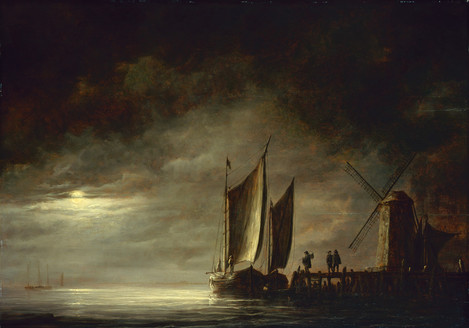 Aelbert Cuyp (Dordrecht 1620 – 1691 Dordrecht), Dordrechter Hafen im Mondschein, um 1645, Eichenholz, Wallraf-Richartz-Museum
Aelbert Cuyp (Dordrecht 1620 – 1691 Dordrecht), Dordrechter Hafen im Mondschein, um 1645, Eichenholz, Wallraf-Richartz-Museum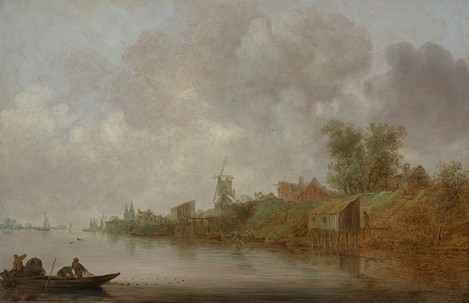 Jan van Goyen (Leiden 1596 – 1656 Den Haag), Flusslandschaft mit Fischerkähnen, 1642, Eichenholz, Privatsammlung
Jan van Goyen (Leiden 1596 – 1656 Den Haag), Flusslandschaft mit Fischerkähnen, 1642, Eichenholz, Privatsammlung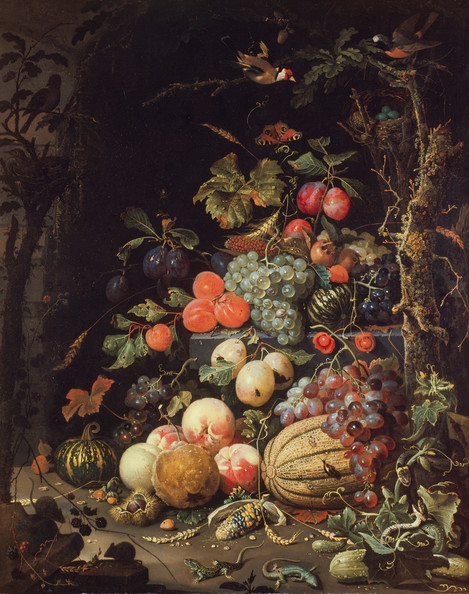 Abraham Mignon (Frankfurt 1640 – 1679 Utrecht), Stillleben, Öl auf Leinwand, Wallraf-Richartz-Museum
Abraham Mignon (Frankfurt 1640 – 1679 Utrecht), Stillleben, Öl auf Leinwand, Wallraf-Richartz-Museum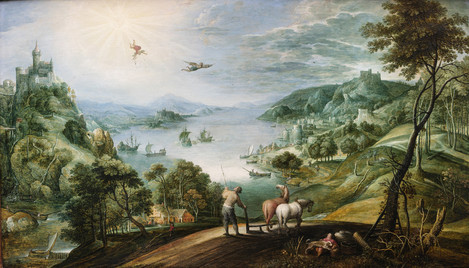 Marten Rijckaert (Antwerpen 1587 – 1631 Antwerpen), Landschaft mit dem Sturz des Ikarus, um 1620-30, Eichenholz, Privatsammlung
Marten Rijckaert (Antwerpen 1587 – 1631 Antwerpen), Landschaft mit dem Sturz des Ikarus, um 1620-30, Eichenholz, Privatsammlung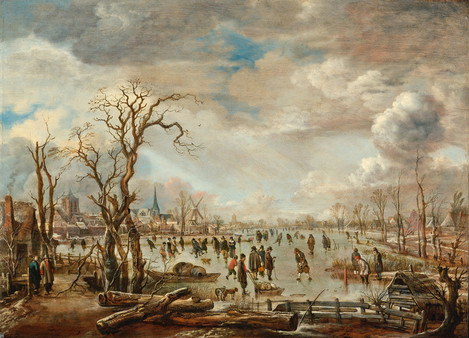 Aert van der Neer (Gorinchem 1603/4 – 1677 Amsterdam), Winterlandschaft mit Eisvergnügen, um 1655, Eichenholz, Heinrich und Anny Nolte-Stiftung, Essen
Aert van der Neer (Gorinchem 1603/4 – 1677 Amsterdam), Winterlandschaft mit Eisvergnügen, um 1655, Eichenholz, Heinrich und Anny Nolte-Stiftung, Essen


